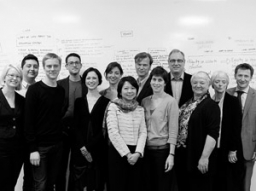
This is an excerpt from the HDL Challenge Briefing on Education
Finland must transform its education system for the twenty-first century. Doing so is not only necessary, but it would place Finland in the lead among nations in its ability to train and prepare its entire population to be even more competitive in the global marketplace and within a changing world.
Education in Finland already has a proven record of success. Decades of continuous reforms have resulted in universal literacy, top rankings in international student achievement test scores, and a population with increasingly higher levels of educational attainment. By law, education in Finland is free and accessible to everyone. Teachers are highly trained, fairly compensated, and highly respected within society at large. And yet, not all students in Finland thrive in the existing system. A significant number of students drop out of school year after year. Some never continue onto secondary school and others leave school before completing their degree or qualifications. Collectively, dropouts become symbols of failure, perceived as social outcasts and a drain on the economy.
Finland’s dropouts may actually be the catalyst for reform in education. Dropouts are a leading indicator that reveals the ultimate challenge and opportunity for education—how to become more relevant in the ever-changing, diversifying world. For all the effort and money spent on early intervention, special education, and counselling, not all students’ learning needs are sufficiently met. Simply put, the main concern is to expand the learning environment to reach everyone, including those individuals who learn best in different ways, in different environments, and with different skills, interests or intelligences.
Although current dropout rates are modest by international standards, Finland cannot afford to wait to see if this is an early indicator of a growing trend. There is need for a genuine and fundamental shift because the larger consequences for society are real. The current education system was developed for a young nation with a small and homogenous population. It was designed for the last structural transformation from an agricultural to industrial economy in which traditional skills and conventional methods were valued.
The government’s latest five-year Development Plan for Education and Research recognizes the many challenges facing the current education system under the pressures of the post-industrial era. It is a candid and comprehensive survey, delineating many topics in education that deserve greater scrutiny and need improvement. However, the report merely outlines and names near-term targets and abstract goals. What is truly needed is a clear pathway for education and what it must do to must to take on present challenges and address long-term solutions.
The opportunity for this studio is to frame this transformation and identify the key dynamics within education toward developing an improved system for today and the future. To do this, the studio will define more relevant and more comprehensive learning environments for all students. If Finland wants to guarantee that its youth are able to keep pace in a changing world and become active participants and competitive players on the global stage, the time to act is now.
Source: HDL Challenge Briefing on Education 1.0

